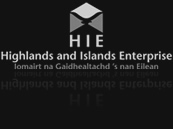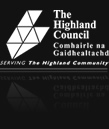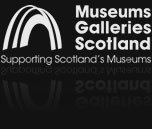Blog
Photographer and history researcher Estelle Slegers Helsen explores the Lochaber area for four weeks to retrace the places where the Scottish photographer W.S. Thomson took his landscape pictures, both in black and white and in colour. The project, called Travel in Time (www.travelintime.uk) is supported by the West Highland Museum and the Year of Stories 2022 Community Fund. She keeps a travelog and here are her writings about the first week on the road.
Travel in Time. Lochaber Series - Day 1. Saturday 21 May 2022
A few weeks ago, a friend's husband said to her: “Do you know Estelle is going to Scotland for a month, and she is staying in a tent!” It looked like a sentence full of disbelief and an expression of sheer madness. So here I am, finally, after weeks of preparing for this trip with a mission supported by the West Highland Museum and the Year of Stories 2002 Community Fund. Roaming around Lochaber, West Scotland, in search of places where the Scottish photographer W.S. Thomson took pictures in the 1940s, 1950s and 1960s of the landscapes he loved; for remakes 70 years after; and to talk to residents in the communities, gathering their stories and recollections.
The trip Up North started early morning in my home town village in Leicestershire, England. The sun was on the brink of breaking through the clouds. Reaching Carlisle, clouds became thicker and greyer just before noon, especially in my favourite direction on the British Isles: Up North. From Moffat, in the heart of the Southern Uplands, where I took a lunch break, drizzle and rain accompanied me to Glen Nevis, where I pitched my tent for the first three days of this adventure. The campsite was rather busy, but I stayed calm and made my home in a snug orange bubble for the night. Thinking about what I should do tomorrow with a weather forecast that doesn’t make you happy. I fell asleep with a question: Is it sheer madness? Probably…
Travel in Time. Lochaber Series - Day 2. Sunday 22 May 2022
Drizzle and rain nearly all day. What do you expect? This is West Scotland. Recently I read it rains here four times more than in the drier parts of the British Isles. Scouting Thomson’s places in and around Glen Nevis, up to the Steall Falls and the Nevis Gorge, even in the lower parts of the valley, is a no go. Visibility is about 200 yards, so the backdrops of his pictures are covered in grey. I must admit it is rather a spectacular view. So what to do when Thomson’s landscapes are full of low hanging clouds and mist, with rain as a bonus? Drinking coffee all day in packed coffee bars? Thomson was a landscape photographer, but in one of his booklets, Let’s See Fort William and Lochaber, there is an interior picture of the Episcopal Church of Fort William. That could be an option.

It is 11:30 am when I stand before the church entrance. A sign indicated Sunday worship is at 10:45 am, and I hear people singing. So I patiently wait until the churchgoers - some local residents, some from further away, even France - have left the church. Before the reverend shuts the door, I go in and say to him I am on a mission. He looks surprised, and I start talking about the project and give him one of the postcards I have with Thomson’s picture on one side and my remake of the flip side. After about an hour, I leave the church and make my way to the car. When overlooking Loch Line from a car park, suddenly a bright spell covers Inverlochy, Caol and Corpach. But it only lasts for 15 minutes. I head back to the campsite to prepare myself for the following days. Hindsight, I am thinking I had to light a candle in the church for better weather. Just hoping for the best…
Travel in Time. Lochaber Series - Day 3. Monday 23 May 2022
Camping is slow travel, because everything takes more time, even if you are organised. It is part of the deal. Although I have a busy schedule, there is no rush. On my way to Glencoe, I make a pitstop at Fort William to say hello at the West Highland Museum, which supports the Lochaber Series of Travel in Time. I am always happy to go into the museum’s office, which is packed with old books and looks like the office of the museum on the Belgian coast where I was the curator manager for about 8 years.
In Glencoe, I meet Helen Fairlie, a key person in the local community, to prepare for the planned talk on June 1st. Drinking coffee in the Craft & Things, Helen introduces me to David, the owner, and we make an appointment for an interview later during my travels. Helen has more introductions to residents who probably can be interviewed. I visit a few of them in the afternoon. But at noon, I tail photographer Sandy McCook, who has to take a picture of me for an article Susy MacAulay is writing for the Press & Journal about the Lochaber Series. I prefer to be the photographer, not the one photographed. The backdrop is the most photographed place in Scotland, Glen Coe's Three Sisters.
Another talk with Eileen Hester, a key person in Ballachulish, in the afternoon. She is also prepared to help me contact residents with stories and recollections. It is the way it works. During the day, the weather is not that bad, meaning good. The sun is even out. So before returning to the campsite, I explore some Lower Glen Nevis pictures made by Thomson. Two near the Youth Hostel - both views covered with “new” trees and a spot further up. Excellent for a remake in about a week when I have returned from the Morvern and Ardnamurchan. Arriving back at the campsite, I whistle the Eurythmics’ song Here Comes the Rain Again. Preparing dinner under a wet sky, tidying up and preparing for an early leave takes about two hours… Slow travel.
Travel in Time. Lochaber Series - Day 4. Tuesday 24 May 2022
It must be 4 am, and there is still a month to go before the summer solstice before the monotonous sound of a real cuckoo accompanies the live soundscape that wakes me. A bit like waking up at home: a mix of a recorded soundscape, cuckoo included, and the birds in our garden. I start packing around 6 and leave the campsite at 7. Today my travels will bring me to Lochaline, the principal village in the Morvern. I always have the feeling an adventure really starts when crossing Loch Linnhe with the ferry at the Corran Narrows. Thomson took several pictures from the Corran side in the direction of Ardgour with the white lighthouse and the Garven Hills as the backdrop scenery. I just missed the ferry, so there is plenty of time to take photos of the view; relatively still water and a veil of mist floating halfway up the hills. Being here before, I scouted the places where Thomson stood to make the Corran pictures. 70 years later, trees prevent making proper remakes.
There are two roads to reach Lochaline. By the A884, the main road, and by the B8043, take a left just before entering Glen Tarbet. I prefer the latter for three reasons: it is more adventurous, I plan to have breakfast at the shores of Loch Linnhe and, foremost, Thomson took a picture titled ‘Loch A Choire and Kingairloch’, a hamlet along that road, still a single track with a lot of twists and turns. Most roads must have been like this when Thomson went out for his photographic adventures. I leave my car at the gate of a small powerhouse accompanied by an antenna for mobile communication. The view is still there, but I struggle to find where Thomson stood to take his picture. Feeling a bit like a headless chicken, I have to retreat and hop into the car after 15 minutes because a flash of rain - I saw it coming - interrupts a reasonably good, bright, and even sunny morning. Half an hour later, I am back on the rough boggy hill where Thomson planted his tripod somewhere. Two rocks in the forefront of his photo are good indicators, but I can’t find them. The light changes every minute on the hills, the pastures at the head of the loch, and the water. On the left side, a salmon fish farm floats on the loch, more in the direction of Loch Linnhe. I will see the results when editing the pictures I took, but it is not a match.
In the evening, a first talk for the residents of Lochaline was planned, but one of the people living in the village, with a connection to the Morvern Heritage Society and the local Community Council, suddenly died, and all community activities were cancelled. Before pitching my tent for my stay in a private garden - thank you, Jennie - I have lunch at the new Community Hub to check my emails and prepare more talks and meetings for the following weeks. The Hub will also be my ‘office’ where I meet and talk to residents for the next two days. I was here before, also in October, two years ago, in between two Covid waves and took the opportunity for three remakes of Thomson’s pictures. One, an old entrance to the quarts sand mines, still the primary employer in the area, was then a good fit. Although I have a second try with some morning light. The two other views are obstructed by trees - this won’t be the last time I write this. There is a view on Ardtornish House - Thomson wrongly indicates Kinlochaline Castle - and a view on the Sound of Mull from Achnaha, along the road from Lochaline to Bunavullin and the Drumnin Estate. I have a clear view of the sound from my tent, where a cruise ship passes when making a two-hour timelapse. I fall asleep with the vanishing evening light, the pre-nocturnal sound of the birds (no cuckoo) and raindrops starting to tick on the tent.
Travel in Time. Lochaber Series - Day 5. Wednesday 25 May 2022
Staying dry is becoming a central topic during this trip. My tent is doing a good job, feeling snug inside, everything covered in a slight orange glow because of the tent fabric's colour. A good night’s sleep, but waking up early, gives me an ocean of time to prepare for the day and even some writing before I load my gear in the car for another adventurous day. After a brief visit to the village shop, I wander around the village to settle at the Community Hub a bit after they opened at 10 am, expecting my first two residential visitors for an interview on their life and recollections.
Introduced by Jennie of the Morvern Heritage Society, I talk to Creina and Kate. Criena was born in the village in 1934. Her father started working in the sand mines, a leading employer in the area, just as forestry is. Kate’s husband became a mechanical worker at the sand mine, and they came in 1971 to Lochaline. Kate became the village school teacher. We discussed lots of topics and talked for about two hours. Criena gave me some old postcard pictures of the village - primarily pre-Thomson - which I scanned to return tomorrow. My mobile office is rather good equipped.
Later in the afternoon, the weather became better, and a strong wind blew clouds at high speed from the west onto the land. I went to search for a Thomson remake at Achnaha, knowing more than half of the view would be taken by trees. When looking for the spot where Thomson stood, I try to think what he thought would be a good shot with a nice view. Although he was fond of the Scottish hills and mountains and climbing them, he occasionally did serious climbing to take a photograph but often headed up a small rock beside the road. Being quite sure I found where he planted his tripod and took his technical camera out, I shot the remake beside a 3-meter tall beech tree with its leaves in the blustery wind, giving me shelter.
The evening I spent in the tent - there was the rain again - scrolling through some writing for my weekly longer online story for the Melton Villages Series.
Travel in Time. Lochaber Series - Day 6. Thursday 26 May 2022
‘Four seasons in one day’ was the theme of the day. Bright spells in the morning gave a chance for a remake of an old entrance of the sand mine. The weather changed so fast that I had to shelter twice because of the rain. Nearby an old loading cart remembers the early times when the sand was transported to the West Pier, down the village. Also, the ferry used this pier but is now only where wood is shipped out of the area.
Before going to the Community Hub, I stopped at Kiel Kirk. In the outhouse, a fine collection of old gravestones are on display. Kate, whom I met yesterday, told the story. It was one of the places where Columba, coming from Iona, suggested building a church for his Christianity mission. At the Community Hub, I browsed through the remakes of the past days and did some paperwork. Susy MacAulay, the heritage writer for the Press & Journal, informed me that her story on the Travel in Time project was published online. Unfortunately, it is behind a paywall. And one time, it hailed. People meeting for a drink and a meal (I can recommend having something to eat there!) said it is another wet May, just like last year.
Late afternoon I went for another - and final - search for Thomson’s picture of Ardtornish House and Loch Aline, hoping to get a better shot than the one I made a few years ago when visiting the Morvern for a holiday. Rain may spoil the opportunity to take a good picture, but weather changes. Trees are another matter. They are there to stay. Leaving the main road out of Lochaline, I parked my car at the entrance of a boggy pasture with a row of deciduous trees at a distance and tried my luck. I crossed the field with my wellies and found a gap with a view, relatively close to where Thomson stood. The sun came out between two heavy rain showers. It brightened the grey water of Loch Aline, the fresh spring green of the trees all around, and n even brighter spot on the shore of the loch and Ardtornish House.
Pleased with this, I returned to the village to give Creina’s postcards back and paid a visit to Bonnie, who lives near the spot where Thomson took his picture of the Sound of Mull. After that chat, it was time to wrap up the day and have a moment of reflection while rain and sunshine rapidly came and went.
Travel in Time. Lochaber Series - Day 7. Friday 27 May 2022
On the road today. I wrapped up the tent and packed the car, carefully checking not to forget anything. Last visit to Cafe L.A. in the Community Hub to check my emails and for some writing. In the inbox, an email from Susy MacAuley, heritage writer for the Press & Journal, that her article on the Lochaber Series is printed in today’s edition, and I found a copy in the Lochaline Stores. After filling up the car - I made not that many miles - I leave the Morvern for Ardnamurchan.
The sun is out in Lochaline, but clouds gather again when reaching Loch Sunart and Strontian. It is a beautiful drive from Strontian to Salen, with lovely old oak trees covered with moss and lichen. Pitstop at Salen, a known place for sailors, to have a quick look for one of the Thomson pictures taken nearby the jetty. It is not from the jetty itself, but a rock a bit towards the village centre. Because a talk is planned in Salen on June 10th, I drive to a nearby place called Camas Torsa, on the road to Kilchoan, my final destination for the day. From Camas Torsa, where I stopped in a small Forestry Commission car park, I spot the view from another Thomson picture. Even a big fir tree is still there, but it won’t be possible for a remake because Thomson went uphill, and the area is covered by trees. Ben Resipol, a prominent hill along Loch Sunart, is covered in low clouds. From here, the road meanders more in an increasingly desolate landscape. What a lovely feeling to be back in Kilchoan and pitch my tent on the grounds of a campsite I visited before, right at the seashore.
I say hello at the Community Centre in Kilchoan and prepare for the evening talk on the Thomson project. After making some arrangements for an interview the following days, I return to the Community Centre for the talk, which went well, with exciting dialogues with the residents on what can be seen in Thomson’s pictures. I tuck in for another night in a spring flourishing West Scotland. And… no rain!












